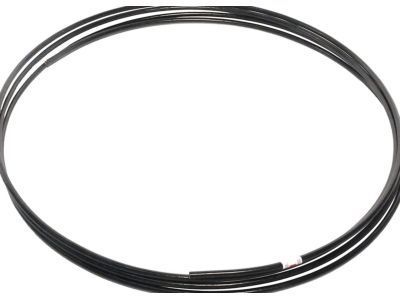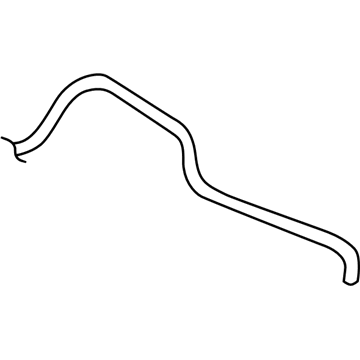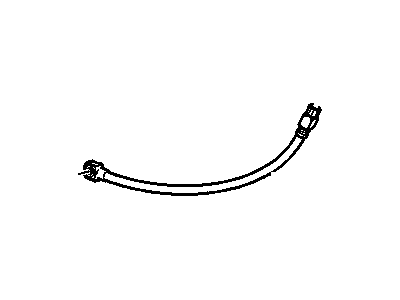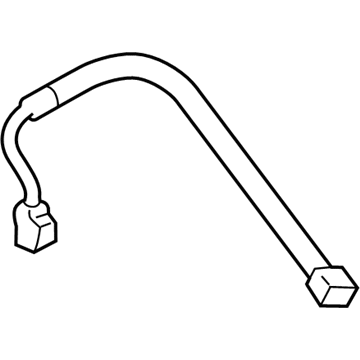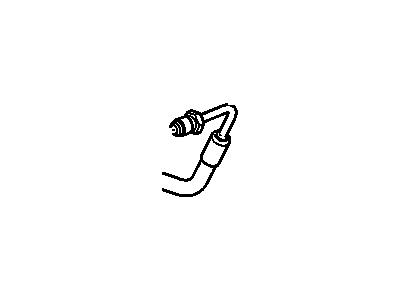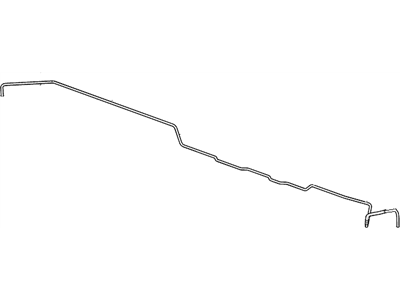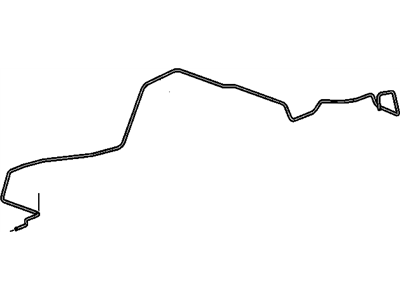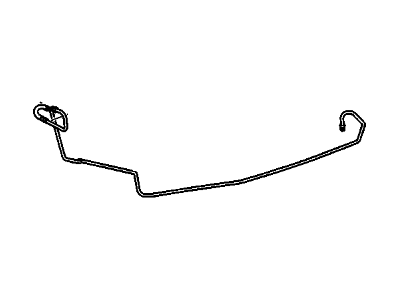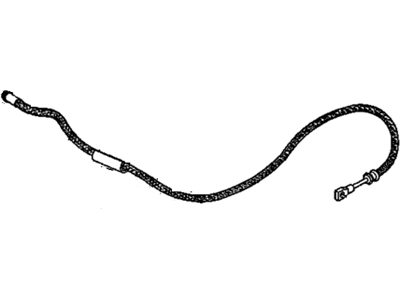My Garage
My Account
Cart
Genuine Chevrolet Express Brake Line
Brake Hose- Select Vehicle by Model
- Select Vehicle by VIN
Select Vehicle by Model
orMake
Model
Year
Select Vehicle by VIN
For the most accurate results, select vehicle by your VIN (Vehicle Identification Number).
64 Brake Lines found
Chevrolet Express Pipe Asm,Brake (Steel)(1/4" X 16 Ft Roll)
Part Number: 88936298$77.58 MSRP: $153.94You Save: $76.36 (50%)Ships in 1-2 Business DaysChevrolet Express Hose Asm,Front Brake
Part Number: 19366788$44.34 MSRP: $87.99You Save: $43.65 (50%)Ships in 1-2 Business DaysChevrolet Express Hose Asm,Rear Brake
Part Number: 19366777$72.90 MSRP: $144.65You Save: $71.75 (50%)Ships in 1-2 Business DaysChevrolet Express Hose Asm,Front Brake
Part Number: 19366787$47.86 MSRP: $90.31You Save: $42.45 (47%)Ships in 1-2 Business DaysChevrolet Express Pipe Assembly, Rear Brake Combination Valve
Part Number: 15235031$35.76 MSRP: $65.03You Save: $29.27 (46%)Ships in 1-2 Business DaysChevrolet Express Hose Assembly, Rear Brake
Part Number: 84286065$29.36 MSRP: $55.39You Save: $26.03 (47%)Ships in 1-2 Business DaysChevrolet Express Pipe Assembly, Rear Brake Intermediate #1
Part Number: 22823441$40.41 MSRP: $76.24You Save: $35.83 (47%)Ships in 1-2 Business DaysChevrolet Express Pipe,Brake (Coated Bulk Pipe, 5/16In X 16Ft)
Part Number: 19181732$239.04 MSRP: $474.31You Save: $235.27 (50%)Ships in 1-2 Business DaysChevrolet Express Pipe, Brk Press Mod Vlv
Part Number: 84583346$58.33 MSRP: $96.55You Save: $38.22 (40%)Ships in 1-3 Business DaysChevrolet Express Pipe, Rear Brake Intermediate
Part Number: 84164485$38.94 MSRP: $70.80You Save: $31.86 (45%)Ships in 1-2 Business DaysChevrolet Express Pipe Assembly, Front Brake Rear
Part Number: 84234829$149.96 MSRP: $270.20You Save: $120.24 (45%)Ships in 1-3 Business DaysChevrolet Express Pipe, Brake Pressure Mod Valve
Part Number: 84242453$60.93 MSRP: $95.87You Save: $34.94 (37%)Chevrolet Express Pipe, Brake Pressure Mod Valve
Part Number: 84242455$55.69 MSRP: $87.63You Save: $31.94 (37%)Ships in 1-3 Business DaysChevrolet Express PIPE-BRK PRESS MOD VLV
Part Number: 85103393$54.28 MSRP: $85.41You Save: $31.13 (37%)Ships in 1-2 Business DaysChevrolet Express PIPE-BRK PRESS MOD VLV
Part Number: 85103395$41.31 MSRP: $65.00You Save: $23.69 (37%)Ships in 1-2 Business DaysChevrolet Express PIPE-BRK PRESS MOD VLV
Part Number: 85103394$43.77 MSRP: $68.87You Save: $25.10 (37%)Ships in 1-3 Business DaysChevrolet Express Pipe, Brake Pressure Mod Valve
Part Number: 84242456$62.82 MSRP: $98.85You Save: $36.03 (37%)Ships in 1-3 Business DaysChevrolet Express Pipe Assembly, Front Brake Front
Part Number: 84234836$25.48 MSRP: $40.09You Save: $14.61 (37%)Chevrolet Express Hose Asm,Front Brake
Part Number: 19366732$67.46 MSRP: $121.00You Save: $53.54 (45%)
| Page 1 of 4 |Next >
1-20 of 64 Results
Chevrolet Express Brake Line
Each OEM Chevrolet Express Brake Line we offer is competitively priced and comes with the assurance of the manufacturer's warranty for the part. Furthermore, we guarantee the speedy delivery of your orders right to your doorstep. Our hassle-free return policy is also in place for your peace of mind.
Chevrolet Express Brake Line Parts Questions & Experts Answers
- Q: How to inspect and replace flexible brake hoses and brake line on Chevrolet Express?A: About every six months, it is important to inspect the flexible hoses that connect the steel brake lines with the front and rear brake assemblies for any cracks, chafing, leaks, blisters, or other damage. This inspection should be done with the vehicle raised and securely placed on jackstands, using a light and mirror for a thorough check. If any of the hoses exhibit any of the mentioned defects, they should be replaced with new ones. To disconnect a brake hose from the brake line, the metal tube nut should be unscrewed with a flare nut wrench, and the U-clip should be removed from the female fitting at the bracket. The hose can then be removed from the bracket. When disconnecting the hose from the caliper, the sealing washers on either side of the fitting should be discarded, and new sealing washers should be used when attaching the new brake hose to the caliper. To reattach a brake hose to the metal line, the end of the hose should be inserted through the frame bracket, ensuring that the hose isn't twisted, and the metal line should be attached by tightening the tube nut fitting securely. The clip should be installed at the frame bracket. It is important to check that the suspension or steering components do not make contact with the hose, and this can be done by having an assistant push down on the vehicle and turn the steering wheel lock-to-lock during inspection. Finally, the brake system should be bled after completing the hose replacement. When replacing brake lines, it is crucial to use the correct parts and avoid using copper tubing. Steel brake lines can be purchased, and prefabricated brake lines with flared tube ends and fittings already installed are available at auto parts stores and dealer parts departments. These lines can be bent to the proper shapes using a tubing bender. During installation, it is important to ensure that the new line is well supported in the brackets and has sufficient clearance between moving or hot components. After installation, the master cylinder fluid level should be checked and fluid should be added as necessary. The brake system should be bled and the brakes should be carefully tested before the vehicle is placed into normal operation.
Related Chevrolet Express Parts
Browse by Year
2024 Brake Line 2023 Brake Line 2022 Brake Line 2021 Brake Line 2020 Brake Line 2019 Brake Line 2018 Brake Line 2017 Brake Line 2016 Brake Line 2015 Brake Line 2014 Brake Line 2013 Brake Line 2012 Brake Line 2011 Brake Line 2010 Brake Line 2009 Brake Line 2008 Brake Line 2007 Brake Line 2006 Brake Line 2005 Brake Line 2004 Brake Line 2003 Brake Line 2002 Brake Line 2001 Brake Line 2000 Brake Line 1999 Brake Line 1998 Brake Line 1997 Brake Line 1996 Brake Line

